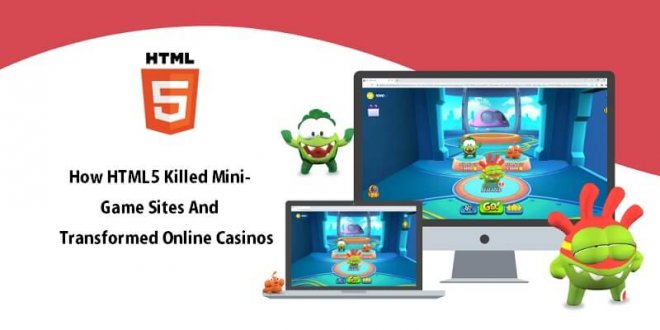Do you remember the days of getting lost in the vast world of Miniclip or exploring the creative chaos of Newgrounds? Those mini-game sites were the go-to digital playgrounds for many. They offered a quick, entertaining escape for kids, teens, and adults sneaking a game or two during work or class hours.
Central to their operation was Adobe Flash, a technology that once seemed inseparable from the internet itself. Yet, as pivotal as Flash was, its era ended, largely due to the rise of HTML5. Let’s dive into how HTML5 killed Flash, mini-game sites, and revolutionized online casinos, all at the same time.
Adobe Flash: A Brief Overview
Adobe Flash was a groundbreaking piece of software that brought to life the interactive web. Despite its inherent issues, we came to love it in the late ’90s and early 2000s. It allowed developers to create animations, games, and even entire websites with engaging content.
However, Flash had its set of problems and challenges. It required users to install a third-party plugin, which became a significant barrier to accessibility. It was notorious for its security vulnerabilities, bugs, and resource-intensive nature. This often led to sluggish performance on less powerful devices and could give even stronger hardware a hard time.
The Rise of HTML5
Enter HTML5, the modern standard for structuring and presenting content on the World Wide Web. Unlike Flash, HTML5 didn’t require external plugins, making it instantly more accessible and secure. It introduced a suite of new features, including native video and audio content support. Plus, it added the canvas element, which opened up new possibilities for web-based gaming.
HTML5 also presented a challenge for mini-game sites. HTML5 games relied on external JavaScript libraries, which couldn’t be bundled in the same way as Flash games. This shift required a fundamental change in how games were developed and distributed. Ultimately, as support for Flash vaned, it led to a gradual decline in traditional mini-game platforms.
Transforming Online Casinos
While the shift from Flash to HTML5 spelled the end for many mini-game sites, it was a boon for online casinos. HTML5 created the first no-download casino, allowing players to enjoy their favorite casino games in a web browser. All this without the hassle of additional software downloads.
This transition made online casinos more accessible, particularly on mobile devices. It brought a new era of cross-platform gaming – and the rise of mobile casinos. Players could now enjoy a seamless gaming experience across desktops, tablets, and smartphones.
The transition from Adobe Flash to HTML5 marked the end of an era for mini-game sites. At the same time, it paved the way for significant advancements in web-based gaming, particularly for online casinos. HTML5 brought accessibility, security, and cross-platform compatibility that Flash couldn’t even close to. It transformed online casinos into more user-friendly and widely accessible platforms.
We may look back fondly on the days of Flash-based mini-games on sites like Miniclip of Newgrounds. But we can’t deny that the evolution to HTML5 has opened new doors. It made high-quality gaming available everywhere without the need for proprietary software.
 free html design Free html design templates
free html design Free html design templates






